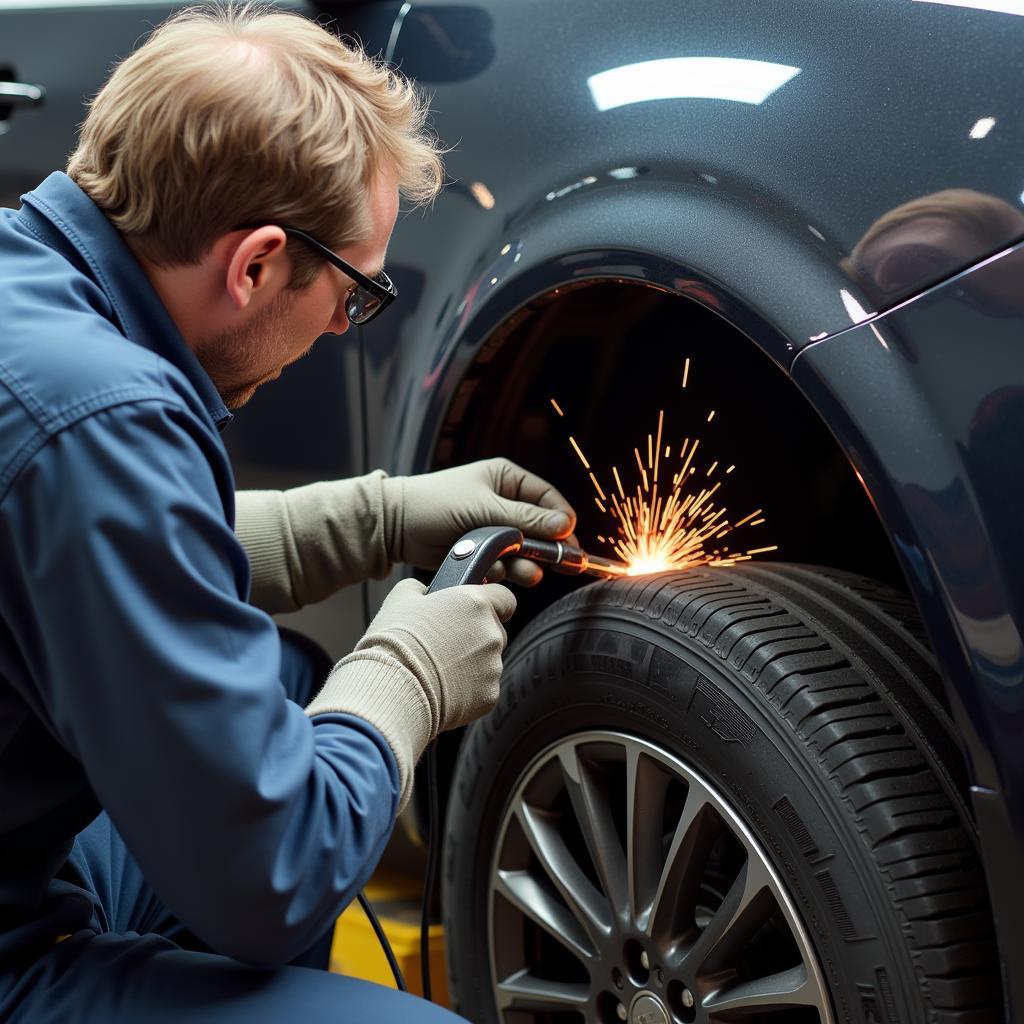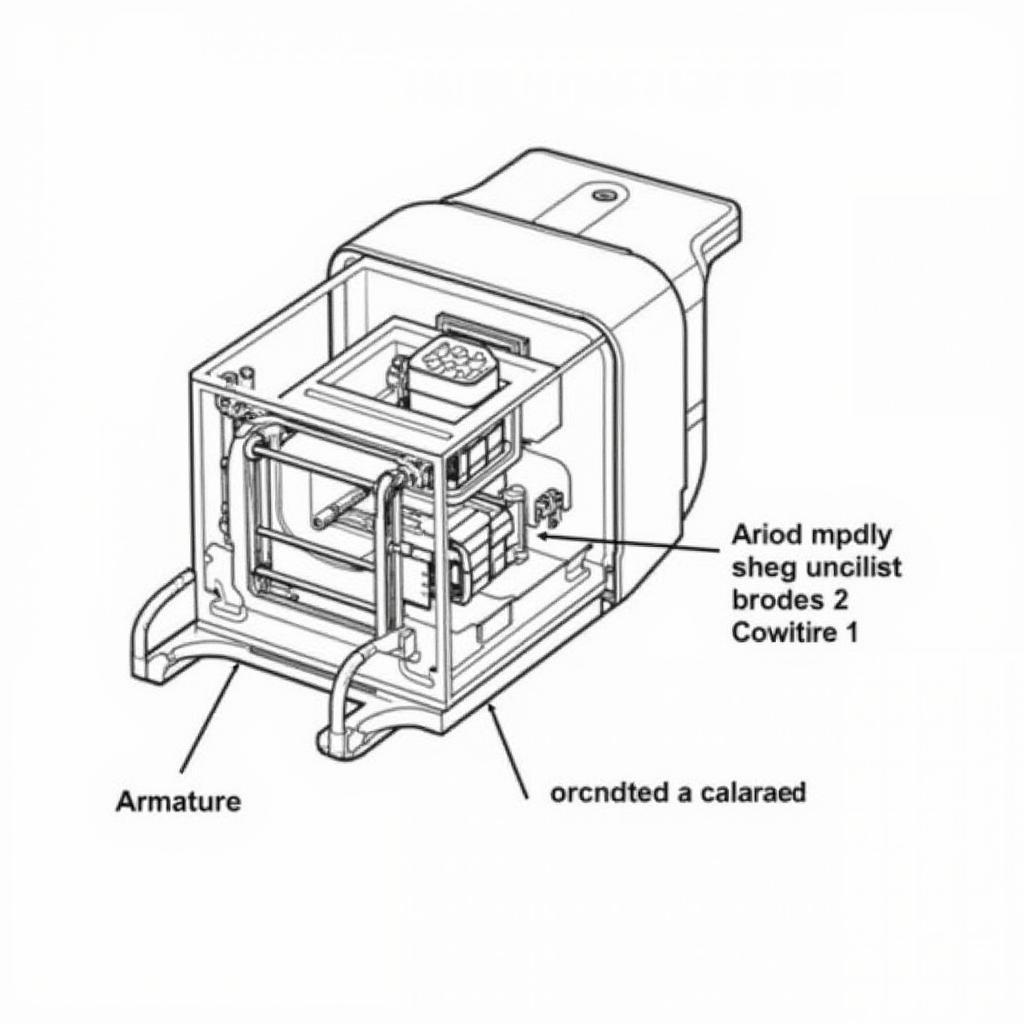Fixing a car hole, whether it’s a small dent, a deep puncture, or rust damage, can seem daunting. But with the right approach and a bit of patience, you can often repair the damage yourself, saving a significant amount of money compared to a professional body shop. This guide will walk you through various methods for how to fix a car hole, depending on the size, location, and cause of the damage.
Identifying the Type of Car Hole
Before diving into repairs, it’s crucial to identify the type of hole you’re dealing with. Is it a dent with a small puncture? Is it a hole caused by rust? Or is it a larger hole from impact damage? This initial assessment will dictate the repair method. Small dents and punctures can often be repaired with DIY kits, while larger holes or rust damage might require professional intervention. If you’re unsure, consult a professional for an accurate diagnosis. how to fix bent car hood can help you if the damage is on your hood.
How to Fix Small Dents and Punctures
Minor dents and punctures can be addressed using readily available body filler and primer. First, clean the area thoroughly and sand down the paint around the hole to create a rough surface for the filler to adhere to. Apply the body filler in thin layers, allowing each layer to dry before applying the next. Once dry, sand the filler smooth and level with the surrounding area. Prime the repaired area, then apply matching paint. For slightly larger dents, you may need to use a dent puller before applying filler. Can you fix a bent car hood? Yes, you can, and similar principles apply.
What if the dent is on a curved surface?
Applying filler on a curved surface requires a bit more finesse, but the process is similar. Use a flexible spreader to ensure the filler conforms to the curve.
Repairing Rust Holes
Rust holes require a more involved approach. First, remove all the rust using a wire brush or sandpaper. Treat the surrounding metal with a rust converter to prevent further corrosion. Then, depending on the size of the hole, you can either use fiberglass cloth and resin to create a patch or weld in a new piece of metal. This is often more challenging than fixing dents and punctures, and you may want to consider professional help, especially for larger areas of rust damage. How to fix bent metal on a car hood] might be helpful even if your rust damage is not on the hood, as the principles remain the same.
How to Fix Larger Holes
Larger holes from impact damage often require professional repair. These repairs typically involve welding in new metal sections, which requires specialized tools and expertise. Attempting to fix large holes yourself without proper training can lead to further damage or an unsafe repair. You can learn about the cost to fix a bent car hood to get an idea of the potential expenses.
 Professional repair of a large car hole
Professional repair of a large car hole
Conclusion: Fixing Your Car Hole the Right Way
Fixing a car hole can be a manageable DIY project or a more complex repair requiring professional expertise. By accurately assessing the damage and selecting the right method, you can restore your car’s appearance and structural integrity. Remember to prioritize safety and consider seeking professional help when needed. For personalized guidance and support, connect with us at AutoTipPro. Our contact information is: +1 (641) 206-8880. Our office is located at 500 N St Mary’s St, San Antonio, TX 78205, United States. We’re here to help you get back on the road! How to fix bent hood of car] is a resource you might find beneficial.
FAQs
- Can I use regular household filler to fix a car hole?
- What type of paint should I use after repairing a car hole?
- How long does it take for body filler to dry?
- Is it safe to drive with a rust hole in my car?
- How much does it typically cost to have a professional fix a car hole?
- What is the best way to prevent rust holes in the future?
- What tools do I need to fix a small dent myself?





Leave a Reply